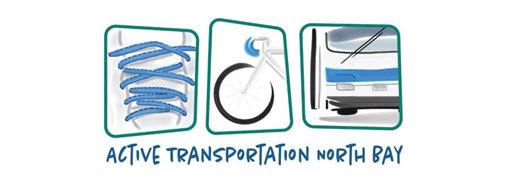Advisory bike lanes have been added to Memorial Drive. This project was identified in the Active Transportation Master Plan (ATMP) as a pilot project to create awareness and serve as an education tool about cycling infrastructure. During the consultation process for the ATMP, many people identified Memorial Drive as a location that could use bike lanes since the Kate Pace Way was designed as a recreational route and accommodates inline skaters, cyclists, walkers and dog walkers, it does not function well as an active transportation route.
An advisory bike lane defines a preferred space for bicyclists and motorists to operate on narrow streets that would otherwise be a shared roadway environment. Roads with advisory bike lanes accommodate low to moderate volumes of two-way motor vehicle traffic and provide a prioritized space for bicyclists with little or no widening of the paved roadway surface. Because of their reduced cross section requirements, advisory bike lanes have the potential to open up more roadways to more comfortable bicycle travel.
The advisory bike lanes on Memorial Drive will be complemented by sharrows and Share the Road signage every 400 metres along the roadway to further clarify that cyclists and motorists are sharing the road.
Why is the project happening?
The Active Transportation Advisory Committee (ATAC) was formed back in August 2016 with the primary objective of developing an Active Transportation Master Plan (ATMP) which was completed in January 2019. The ATMP provides direction for active transportation for the period of 20 years and this is the first infrastructure project implemented under the ATMP. The City of North Bay along with partners from the ATAC were able to access provincial grants under two programs that will fund all of the active transportation projects and programming for 2020 along with the City’s required contribution, which will make a substantial change in the community.
Advisory lanes are to remind motorists that they are sharing the road with cyclists. Advisory bike lanes are often placed at roadsides with width challenges as a means to remind drivers that bikes are permitted to use Canada’s municipal or federal roadways unless otherwise designated, or to promote the road as a bikeway component of a greater city-wide network. These Advisory lanes are placed at proximate dimensions and permit the use of vehicle use in the lane when required. In all cases vehicles are to yield to Advisory Lane Cyclists where safe passing widths are not available and may only pass when spaces permit.
When the City developed its Active Transportation plan residents were consulted on determining which City Routes are desired multi-modal corridors, Memorial Drive was determined to be one of these routes. It is important to note that the Transportation Association of Canada and the province of Ontario include bicycles as permitted uses on urban streets and roadways. Residents of North Bay are permitted to bike on all city streets and roadways under provincial and federal requirement.
The dashed lines on Memorial Drive signify advisory lanes, rather than bike lanes, which are painted with a solid line. Advisory lanes are dotted lined and similar to bike lanes can range in size from 1-5m -1.8 m from the curb. The lanes on Memorial Drive were requested to be 1.5 m from the curb.
The advisory lanes on Memorial Drive will be complemented with 14 Share The Road Signs and 14 bicycle sharrows (bicycle symbols) every 400 metres along the roadway to further clarify that cyclists and motorists are sharing the road.
It is hoped that by creating advisory lanes on Memorial that some of the high speed commuter cyclist traffic will be diverted off of the Kate Pace Way Multi Use Recreational Trail onto the roadway.
The advisory lanes on Memorial Drive are a pilot project which will be re-evaluated at the end of the season.
Key Features
Unlike dedicated bicycle lanes, which prohibit motor vehicle use, an advisory bike lane overlaps with the motor vehicle travel area and it is expected that motorists will regularly encounter meeting or passing situations where driving in the bike lane is necessary and safe. At low volumes, conflicting bicyclist/motorist interactions are limited, and the design can maintain a comfortable environment for bicyclists. The key features of an advisory lane are:
- a marked advisory lane for cyclists, in this case 1.5m wide;
- a two-way travel lane is where motor vehicles operate in the absence of other vehicles approaching in the opposite direction; and
- advisory bike lanes are intuitive but regulatory signs can be added for clarity.

